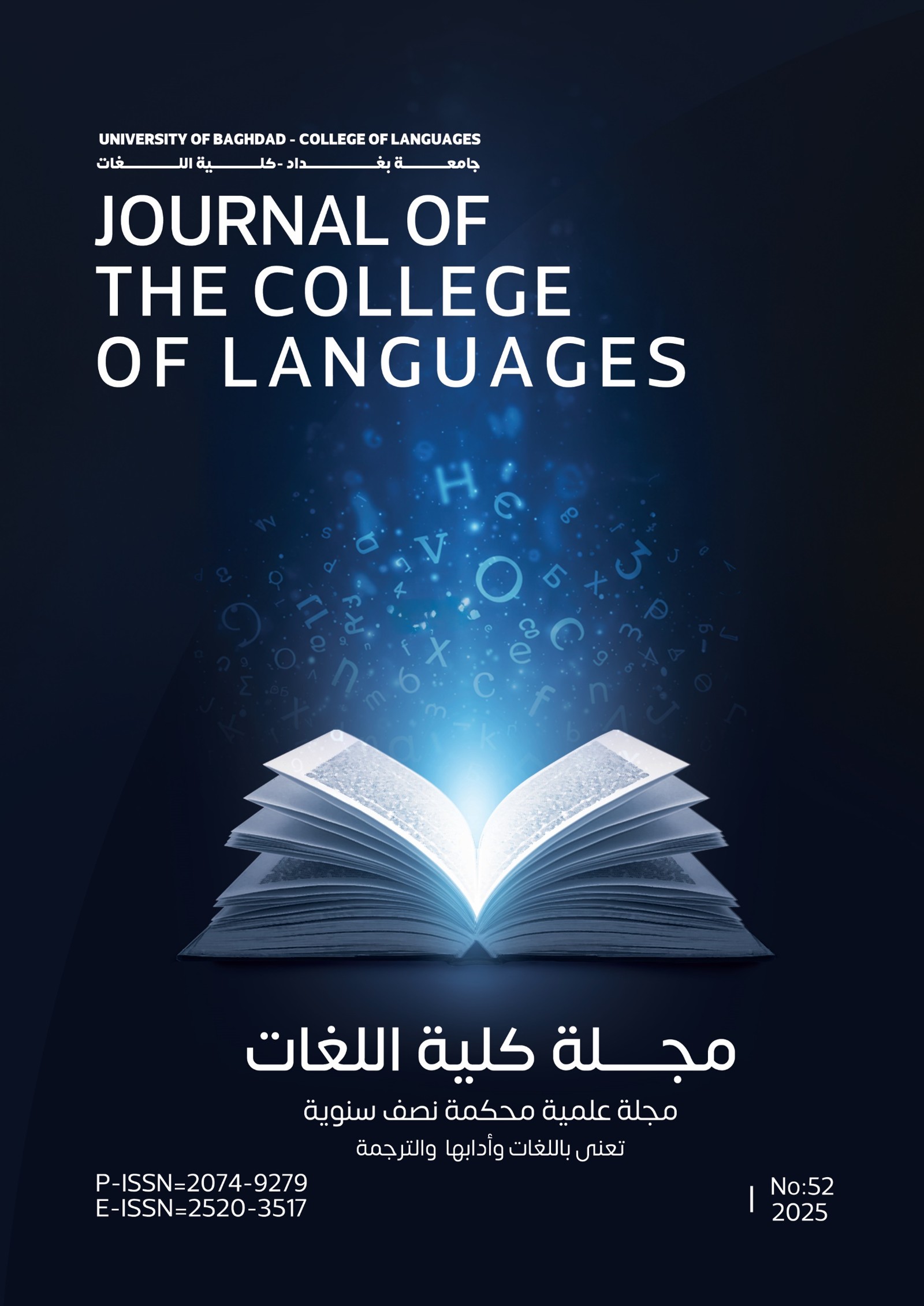The Concept Of Time In The Rubai' Of Omara Khayyam And Its Reflection In The Works Of Russian And Soviet Poets
Концепция Времени В Рубайятах Омара Хайяма И Ее Отражение В Творчестве Русских И Советских Поэтов
DOI:
https://doi.org/10.36586/jcl.2.2025.0.52.0205Keywords:
Rubaiyat, Omar Khayyam, Concept of time, Poetry, S. Yesenin, K. Efimov, K. Balmont, рубаи, Омар Хайям, концепция времени, поэзия, С. Есенина, К. Ефимова, К. БальмонтаAbstract
This article examines the role and significance of the concept of time in the rubaiyat of Omar Khayyam, an outstanding Persian poet and philosopher. Khayyam deeply explores temporal categories, emphasizing the fleeting nature of life, the inevitability of death, and the value of enjoying the present moment. The article also analyzes the artistic role this concept plays in his rubaiyat and the semantic weight it carries.
Furthermore, the article analyzes the works of Russian poets inspired by Khayyam's rubaiyat, such as Sergey Yesenin, Konstantin Efimov, and Konstantin Balmont. These poets, inspired by Khayyam's rubaiyat, reinterpret his ideas about time and existence, allowing them to create new literary forms and images. Attention is given to the existential aspects of time in Khayyam’s works, as well as the philosophical meanings embedded in epithets and metaphors.
The article reveals the characteristic features of quatrains, as well as the epithets and artistic-expressive methods used to convey philosophical thought. It also highlights the cultural interconnections between Persian and Russian literature, emphasizing how the exchange of motifs and themes deepens philosophical reflections on human existence.
The relevance of this study lies in the need to recognize universal issues that concern poets from various cultures and eras. The analysis reveals that the concept of time is not only a central theme in Khayyam's work but also lays the foundation for further interpretations in the poetry of Russian authors.
Аннотация
В статье рассматриваются роль и место концепта времени в рубайятах Омара Хайяма, выдающегося персидского поэта и философа. Хайям глубоко исследует временные категории, акцентируя внимание на быстротечности жизни, неизбежности смерти и ценности наслаждения настоящим моментом. Также в статье анализируется, какую изобразительную роль этот концепт играет в его рубайятах, какую смысловую нагрузку несет.
Кроме того, в рамках статьи проанализировано творчество русских и советских поэтов, произведения которых были вдохновлены рубайями Омара Хайяма, таких как Сергей Есенин, Моисей Ефимов и Константин Бальмонт. Эти поэты, вдохновляясь рубайятами персидского поэта, переосмысляют его идеи о времени и бытии, что позволяет им создавать новые литературные формы и образы. Внимание уделяется экзистенциальным аспектам времени в творчестве Хайяма, а также философским смыслам, заключённым в эпитетах и метафорах.
В статье раскрываются характерные особенности четверостиший, а также эпитетов и художественно-выразительных способов передачи философской мысли. Исследование также акцентирует внимание на культурных взаимосвязях между персидской и русской литературой, подчеркивая, как обмен мотивами и темами способствует углублению философских размышлений о человеческом существовании.
Актуальность данного исследования заключается в необходимости осознания универсальных проблем, волнующих поэтов разных культур и эпох. В результате анализа выявляется, что концепция времени не только является центральной темой в творчестве Хайяма, но и закладывает основы для дальнейших интерпретаций в поэзии русских авторов.
References
Andreeva, I. I. (1990). Omar Khayyam's works are an expression of extreme freethinking and freethinking // Ancient and medieval literatures of the peoples of the USSR. Kazan: Kazan University Publishing House, 63-73.
Ayat Yusuf Saleh. (2024). Pushkin quotes in the works of Chekhov: Пушкинские цетаты в произведениях чехова. Journal of the College of Languages (JCL), 49, 135-144. https://doi.org/10.36586/jcl.2.2024.0.49.0135
Braginsky, I. S. (1972). From the history of Tajik and Persian literatures. Moscow, 211-222.
Efimov, M. D. (2002). Tolkebut tuerede: Hoboonnor/ Moisey Efimov. Djokuuskai: Bichik- 56
Emelyanov I. S. (2001). Russian-Yakut literary connections in prose (end of the 19th - beginning 20th century). Novosibirsk: Nauka, 2001, 36.
Ismukov, N. A. (2011). Existential poetry of O. Khayyam: a refutation of time. Bulletin of the Russian University of Cooperation, - No. 1 (6). 115 - 119.
K'erkegor, S. (1993). Sickness to Death / S. K'erkegor // Fear and Trembling. M.: Respublika, 383.
Krainev I. N. (2001), Omar Khayyam in the constellation of poets: an anthology of eastern lyrics / Introduction. article by I. N. Krainev; notes by I. N. Krainev. – St. Petersburg: Crystal, 2001. 584.
Omar Khayyam, Rubai. (2018). Collection of poems. Dushanbe: Sadriddin Aini Literary Foundation; Ryazan: Aini Publishing House "Orlik", 428.
Omar Khayyam. Rubaiyat. (1965). Translation from Tajik-Farsi by V. Derzhavin. Dushanbe. IRFON Publishing House, 113.
Rakhmanov, B. R. (2020). Persian-Tajik literature in the context of Russian-Eastern literary ties of the first third of the 19th century: Monograph. Dushanbe: RTSU, 314.
Vasilchenko, E. Yu. (2018). Eastern Themes in Chamber Instrumental Works by Tatyana Smirnova: "Persian Motifs". Bulletin of the University of World Civilizations, Vol. 9. No. 2. (19), 59-66.
Vasilyeva, T. N. (2007). Poetics of M. Efimov's rubai. Bulletin of the Herzen State Pedagogical University of Russia, 19 (45). 52-54.
Vasilyeva, T. N. (2007). Poetics of M. Efimov's rubai: theme and problems // Natural resources of the Arctic and Subarctic. No. 3. 160-163.
Words, Silver Age. Sergei Yesenin. Persian motifs. [Electronic resource]. URL: slova.org.ru/esenin/div4/ (accessed: 14.06.2024)

Downloads
Published
Issue
Section
License
Copyright (c) 2025 Journal of the College of Languages (JCL)

This work is licensed under a Creative Commons Attribution 4.0 International License.







